GrabCAD

Onion Crane (Advanced Light-Weight Lunar Gantry)
by GrabCAD
Last crawled date: 1 year, 11 months ago
This is a highly advanced Ganty/Crane (Onion Crane)
It can condense to the size of 15-20Ft by 3-5Ft, with a weight of about 6,000 lb (Refer to Drawing/PDF). when it's fully inflated it can stand about 50 feet off the ground (Please note that the legs can be significantly smaller, this was designed if it was on the earth and it could lift 7,000-15,000 lb. (Please also note that the cad model is very minimalistic)
The main structure (the inflatable part) is layered with first Kapton as the bladder material, then Kevlar, with Nomex on top (This protects from the extreme temperatures and the MMOD Impacts). Finally, on top, it is coated with aluminum, whether that be foil, paint, or fabric (This is used to protect against UV as plastics degrade much faster Under UV light) (refer to picture for more info).
Please Note: I did not add solar panels to some of the pictures as It would obstruct the view of the actual design. Note: Look at Drawing/PDF for more info.
Control Panel:
Antenna
Gas Regulation System
Safety Control
Communication Systems
Power Control Systems
Hoist Control System
(Look at Drawing/PDF for more info)
So, the crane can dock to the camp It uses a special cord with a "what I call the" Onion Knot Plug (refer to picture to see design). It has a positive, negative, and ground so the crane can charge during the lunar night. The draw node is used when the crane is not in use and fully charged where it will give power to the camp during the lunar day. Signal node allows the camp or earth (using the camp antenna) to communicate to the crane manually in case the antenna breaks, also it will have less noise than the signal going by an antenna. (Look at Drawing/PDF for more info)
There are strap hoists on the rope (refer to drawn images) near the base of the crane to allow manual tightening (They should already be at their correct tightness when blown up but if a wire HAS TO CHANGE this can help).
On the opposite side of the leg of the control panel, the battery sits, for easy access.
The rope, wire, and straps are made of Kevlar coated in aluminum.
The wheelbases are bearings/slip rings to allow for multi-directional usage.
The wheels extend when blown up but stay retracted before being blown up saving a lot of space. This uses a clap/clip slide on the wheelbase till it "clicks" into place, with extra space it can allow for minimal suspension helping have softer landings (even though it is on the moon it may still need suspension)
The wires that follow the top of each leg all lead to a spool. When deflated the spool will be completely rolled up to make sure that the wires won't get stuck on other objects. As it starts to inflate the spool unrolls. The use of the wires is to strengthen the inflated legs by creating tension in the opposite way the rope pulls.
For all edges of the inflatable legs and the bases of the steel eyes, It may require Whipple Shield to make sure that this crane is almost completely leak proof.
Lastly, on the inside, there are metal reinforcements to allow the legs to have lower pressures, I did not model it as it is not required and it would make the model much more complicated, but I would imagine it would be folded and would snap into place once the crane inflated.
For more information, please look at Drawing/PDF, if you have any question please email me at Zealousllc.co@gmail.com
It can condense to the size of 15-20Ft by 3-5Ft, with a weight of about 6,000 lb (Refer to Drawing/PDF). when it's fully inflated it can stand about 50 feet off the ground (Please note that the legs can be significantly smaller, this was designed if it was on the earth and it could lift 7,000-15,000 lb. (Please also note that the cad model is very minimalistic)
The main structure (the inflatable part) is layered with first Kapton as the bladder material, then Kevlar, with Nomex on top (This protects from the extreme temperatures and the MMOD Impacts). Finally, on top, it is coated with aluminum, whether that be foil, paint, or fabric (This is used to protect against UV as plastics degrade much faster Under UV light) (refer to picture for more info).
Please Note: I did not add solar panels to some of the pictures as It would obstruct the view of the actual design. Note: Look at Drawing/PDF for more info.
Control Panel:
Antenna
Gas Regulation System
Safety Control
Communication Systems
Power Control Systems
Hoist Control System
(Look at Drawing/PDF for more info)
So, the crane can dock to the camp It uses a special cord with a "what I call the" Onion Knot Plug (refer to picture to see design). It has a positive, negative, and ground so the crane can charge during the lunar night. The draw node is used when the crane is not in use and fully charged where it will give power to the camp during the lunar day. Signal node allows the camp or earth (using the camp antenna) to communicate to the crane manually in case the antenna breaks, also it will have less noise than the signal going by an antenna. (Look at Drawing/PDF for more info)
There are strap hoists on the rope (refer to drawn images) near the base of the crane to allow manual tightening (They should already be at their correct tightness when blown up but if a wire HAS TO CHANGE this can help).
On the opposite side of the leg of the control panel, the battery sits, for easy access.
The rope, wire, and straps are made of Kevlar coated in aluminum.
The wheelbases are bearings/slip rings to allow for multi-directional usage.
The wheels extend when blown up but stay retracted before being blown up saving a lot of space. This uses a clap/clip slide on the wheelbase till it "clicks" into place, with extra space it can allow for minimal suspension helping have softer landings (even though it is on the moon it may still need suspension)
The wires that follow the top of each leg all lead to a spool. When deflated the spool will be completely rolled up to make sure that the wires won't get stuck on other objects. As it starts to inflate the spool unrolls. The use of the wires is to strengthen the inflated legs by creating tension in the opposite way the rope pulls.
For all edges of the inflatable legs and the bases of the steel eyes, It may require Whipple Shield to make sure that this crane is almost completely leak proof.
Lastly, on the inside, there are metal reinforcements to allow the legs to have lower pressures, I did not model it as it is not required and it would make the model much more complicated, but I would imagine it would be folded and would snap into place once the crane inflated.
For more information, please look at Drawing/PDF, if you have any question please email me at Zealousllc.co@gmail.com
Similar models
grabcad
free

Lunar Gantry
...re ropes are used to guide kevlar shielding and also help stabilize the structure and also guides it when it deflates to be pack.
thingiverse
free

Spool Support by fguarisco
... by fguarisco
thingiverse
the spool support is adjustable and can support spools from 250 to 8'000 g.
for more info see pdf.
grabcad
free

Lightweight Lunar gantry
...k of inflatable structural components,
i used whipple shielding system to protect the air beams ..........
more info on the pics.
grabcad
free

Wire Rope
...transmission of mechanical power. wire rope is also used to transmit force in mechanisms. the rope is designed in solidworks 2020
3dwarehouse
free

4-Leg Wire Rope Bridle Slings
...lly made with latched eye hooks at the end of each rope length, but each leg can be customized with different hardware as needed.
thingiverse
free

Antenna Guying Collar/Ring by VA3SFA
...gn for vertical antenna guying collars. these rings can be used to help keep the antenna upright by the use of guy wires (rope).
grabcad
free

ALLGO crane (An Advanced Lightweight Lunar gantry for Operations)
... cover system. the load force is borne by this structure, but the tube is responsible for keeping the structure open and opening.
grabcad
free

HULK lunar gantry
...em for lifting heavy and big structures on the moon like the spacex
dragon module. and inactive vehicle used by astronaut on moon
grabcad
free

CRANE
... lower materials and to move them horizontally. it is mainly used for lifting heavy things and transporting them to other places.
thingiverse
free

Isolator for wire antennas dipole or other by andiz
... for wire antennas such as. dipole.
the insulator may be used different.
simply hang dipol antenna (rope or wire) without knots.
Onion
archibase_planet
free

Onion
...onion
archibase planet
onion an onion vegetables
onion - 3d model (*.gsm+*.3ds) for interior 3d visualization.
archibase_planet
free

Onion
...onion
archibase planet
onion vegetables
onion n091210 - 3d model (*.3ds) for interior 3d visualization.
archibase_planet
free

Onion
...onion
archibase planet
onion vegetables vegetable
onion - 3d model (*.gsm+*.3ds) for interior 3d visualization.
design_connected
$27

Onion
...onion
designconnected
locsin international onion computer generated 3d model.
3d_export
$20

Onion
... limited to versions so it should work regardless what version your 3d program is. formats are: maya lightwave3d cinema4d max obj
turbosquid
free

Onion
...onion
turbosquid
free 3d model onion for download as obj on turbosquid: 3d models for games, architecture, videos. (1551960)
3d_export
$15

onion slice
...onion slice
3dexport
onion slice
3d_export
$5

onion yellow
...onion yellow
3dexport
yellow onion
turbosquid
$20

Onion
...on
turbosquid
royalty free 3d model onion for download as ma on turbosquid: 3d models for games, architecture, videos. (1465178)
turbosquid
$9

Onion
...n
turbosquid
royalty free 3d model onion for download as fbx on turbosquid: 3d models for games, architecture, videos. (1546097)
Lunar
3ddd
free

erba lunare
...erba lunare
3ddd
erba
erba lunare
turbosquid
$10

Suppressor Lunar
...quid
royalty free 3d model suppressor lunar for download as on turbosquid: 3d models for games, architecture, videos. (1380407)
3ddd
$1

Lunar lounge
...ounge
3ddd
stellarworks
модель кресла lunar lounge от производителя stellar works. габаритные размеры 850x710x800. 23k полигонов.
turbosquid
$62
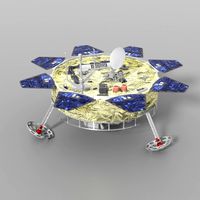
Lunar Lander
... free 3d model lunar lander for download as obj, fbx, and lxo on turbosquid: 3d models for games, architecture, videos. (1185844)
turbosquid
$10

Lunar Chair
...y free 3d model lunar chair for download as 3ds, obj, and dae on turbosquid: 3d models for games, architecture, videos. (1219708)
3ddd
free

Диван Lunar
...d710xh800mm. в архиве есть текстуры, файлы в 2011 и 2014 версиях и obj-файл. 8,5k полигонов. turbo-/meshsmooth при необходимости.
turbosquid
$39

Lunar Sword
...e 3d model lunar sword for download as max, obj, fbx, and dae on turbosquid: 3d models for games, architecture, videos. (1440758)
turbosquid
$10

Lunar Armchair
...del lunar armchair by jamni for download as max, fbx, and obj on turbosquid: 3d models for games, architecture, videos. (1566066)
turbosquid
$1

Lunar car
...e 3d model lunar car for download as 3ds, obj, md3, and blend on turbosquid: 3d models for games, architecture, videos. (1209060)
turbosquid
$99

Lunar Plow
... available on turbo squid, the world's leading provider of digital 3d models for visualization, films, television, and games.
Gantry
turbosquid
$349

Gantry crane
...alty free 3d model gantry crane for download as ige and sldas on turbosquid: 3d models for games, architecture, videos. (1476278)
3d_export
free

firestone advertising gantry
...rs premises and<br>these advertisement gantries, were very popular in the 30-70's at grand prix races advertising tyres
turbosquid
$30

Derelict Launch Gantry
...alty free 3d model derelict launch gantry for download as fbx on turbosquid: 3d models for games, architecture, videos. (1669952)
turbosquid
$129

Gantry Crane RTG
...e 3d model gantry crane rtg for download as max, obj, and fbx on turbosquid: 3d models for games, architecture, videos. (1491933)
turbosquid
$120
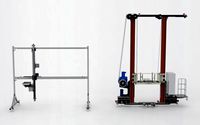
Gantry stacker Assembly
...try stacker assembly for download as sldas, fbx, 3ds, and ige on turbosquid: 3d models for games, architecture, videos. (1648516)
turbosquid
$19

Train Signals Gantry
...l train signals gantry for download as 3ds, max, obj, and fbx on turbosquid: 3d models for games, architecture, videos. (1462242)
turbosquid
$5
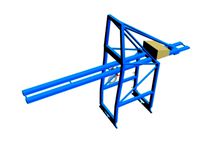
STS Gantry Crane
... available on turbo squid, the world's leading provider of digital 3d models for visualization, films, television, and games.
turbosquid
$160

Bulk carrier with gantry crane
...carrier with gantry crane for download as lwo, obj, and blend on turbosquid: 3d models for games, architecture, videos. (1285258)
3d_export
$50
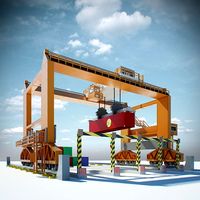
RMG Gantry Crane 3D Model
...t hoist rail rubber tyre tire rtg eot beam portal heigh tonne shipyard port
rmg gantry crane 3d model 5starsmodels 42860 3dexport
3d_export
$29

gantry crane
...istic model that will enhance the detail and realism of any of your rendering projects.<br>file formats: max, obj, fbx, 3ds
Crane
archibase_planet
free
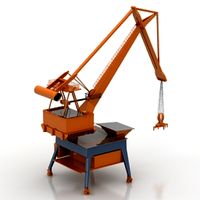
Crane
...rane
archibase planet
crane harbor crane lifting crane port crane
crane 1 - 3d model (*.gsm+*.3ds) for exterior 3d visualization.
archibase_planet
free

Crane
...rane
archibase planet
crane port crane lifting crane harbor crane
crane 4 - 3d model (*.gsm+*.3ds) for exterior 3d visualization.
archibase_planet
free
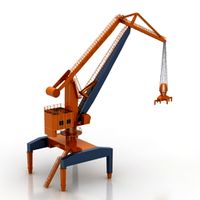
Crane
...rane
archibase planet
crane port crane lifting crane harbor crane
crane 2 - 3d model (*.gsm+*.3ds) for exterior 3d visualization.
archibase_planet
free
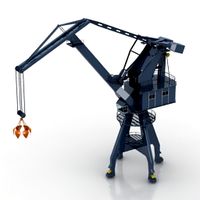
Crane
...rane
archibase planet
crane harbor crane lifting crane port crane
crane 3 - 3d model (*.gsm+*.3ds) for exterior 3d visualization.
archibase_planet
free

Crane
...crane
archibase planet
crane lifting crane hoisting crane
crane mob n080708 - 3d model for interior 3d visualization.
archibase_planet
free
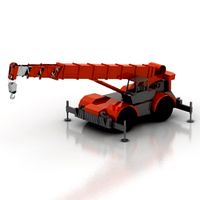
Crane
...e
archibase planet
crane lifting crane hoisting crane
crane n110314 - 3d model (*.gsm+*.3ds+*.max) for exterior 3d visualization.
archibase_planet
free

Crane
...base planet
crane lifting crane hoisting crane gibbet
crane n100713 - 3d model (*.gsm+*.3ds+*.max) for exterior 3d visualization.
3d_export
$29

Crane
...crane
3dexport
a cute crane
3d_ocean
$18
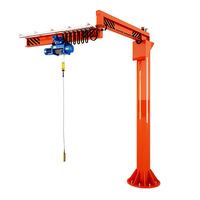
Crane
...crane
3docean
crane lift loader machine work
this is a high poly 3d model crane
archibase_planet
free

Crane
...crane
archibase planet
crane
saddle jib crane cel - 3d model. free download.
Advanced
turbosquid
$139

Carol (Advanced)
... available on turbo squid, the world's leading provider of digital 3d models for visualization, films, television, and games.
turbosquid
$15

Explay Advance
... available on turbo squid, the world's leading provider of digital 3d models for visualization, films, television, and games.
turbosquid
$15

ADVANCED ROOM.max
... available on turbo squid, the world's leading provider of digital 3d models for visualization, films, television, and games.
turbosquid
$2

Advanced Crate
... available on turbo squid, the world's leading provider of digital 3d models for visualization, films, television, and games.
turbosquid
$1
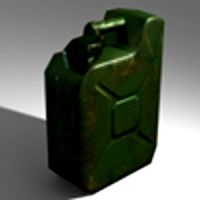
Advanced Canister
... available on turbo squid, the world's leading provider of digital 3d models for visualization, films, television, and games.
turbosquid
$20

automatic Advance Gun
...
royalty free 3d model automatic advance gun for download as on turbosquid: 3d models for games, architecture, videos. (1609069)
turbosquid
$4

Advanced Shower Equipment
...free 3d model advanced shower equipment for download as blend on turbosquid: 3d models for games, architecture, videos. (1282411)
turbosquid
$1

Advanced Sniper Rifle
...oyalty free 3d model advanced sniper rifle for download as obj on turbosquid: 3d models for games, architecture, videos. (720205)
3d_ocean
$32
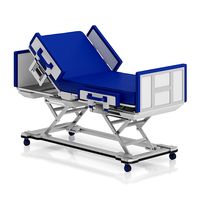
Advanced Hospital Bed
...ds max 2010 or higher and many others. formats *.max scanline *.max vray *.max mentalray *.c4d advanced render *.c4d cinema 4d...
turbosquid
$17

Advance Rifle Patrol
...free 3d model advance rifle patrol for download as ma and obj on turbosquid: 3d models for games, architecture, videos. (1409260)
Weight
archibase_planet
free

Weight
...weight
archibase planet
weight
weight n030907 - 3d model for interior 3d visualization.
3ddd
$1
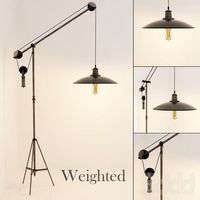
Weighted
...weighted
3ddd
weighted
высота (см)165ширина (см)75
archibase_planet
free

Weight
...weight
archibase planet
weight dumb-bell dumbbell
weight 24 kg n290313 - 3d model (*.gsm+*.3ds) for interior 3d visualization.
3d_export
free

weight
...weight
3dexport
archibase_planet
free

Weight
...weight
archibase planet
gym sport equipments
sport`s weight n010907- 3d model for interior 3d visualization.
turbosquid
$14
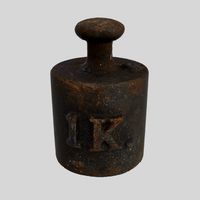
Weight
...uid
royalty free 3d model weight for download as max and obj on turbosquid: 3d models for games, architecture, videos. (1197215)
turbosquid
$19

Weight
...alty free 3d model weight for download as , stl, obj, and fbx on turbosquid: 3d models for games, architecture, videos. (1684982)
turbosquid
$4

Weights
...yalty free 3d model weights for download as max, obj, and fbx on turbosquid: 3d models for games, architecture, videos. (1494762)
turbosquid
$6

weights
... free 3d model weights for download as 3ds, obj, c4d, and fbx on turbosquid: 3d models for games, architecture, videos. (1261435)
turbosquid
$3

weight
...free 3d model weight for download as blend, dae, fbx, and obj on turbosquid: 3d models for games, architecture, videos. (1558127)
Light
archibase_planet
free
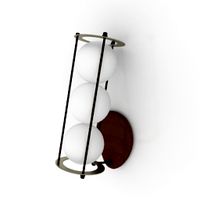
Light
...light
archibase planet
lamp lighting light
light - s2 - 3d model for interior 3d visualization.
archibase_planet
free

Light
...light
archibase planet
light luminaire lighting
light l0465 - 3d model (*.gsm+*.3ds) for interior 3d visualization.
3d_export
$5
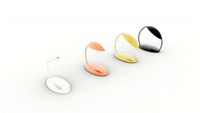
lighting
...lighting
3dexport
lighting
3d_export
$5

lighting
...lighting
3dexport
lighting in livingroom
turbosquid
$3

Lighting Tree with Lights
...d model lighting tree with lights for download as max and 3ds on turbosquid: 3d models for games, architecture, videos. (1585507)
archibase_planet
free
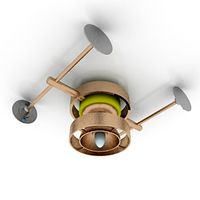
Light
...light
archibase planet
luster lighting solution
light - s - 3d model for interior 3d visualization.
archibase_planet
free

Light
...light
archibase planet
luster lamp lighting
light 1 - 3d model for interior 3d visualization.
archibase_planet
free

Lights
...lights
archibase planet
surgical lights surgical lamp
surgical lights (floor) - 3d model for interior 3d visualization.
archibase_planet
free
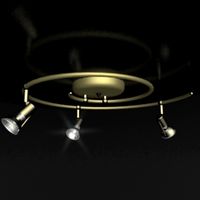
Light
...light
archibase planet
lighting luminaire candlelight
light l0463 - 3d model (*.gsm+*.3ds) for interior 3d visualization.
3d_export
$18
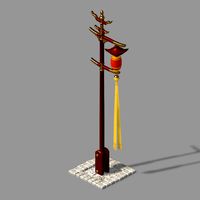
street light-lighting-light-xia bing
...
3dexport
street light-lighting-light-xia bing<br>max 2015 v-ray 3 max 2015<br>textures<br>all files in zip...
